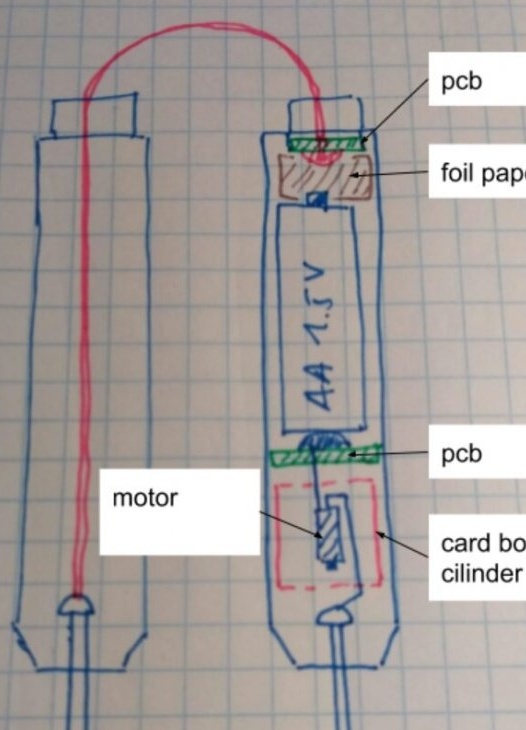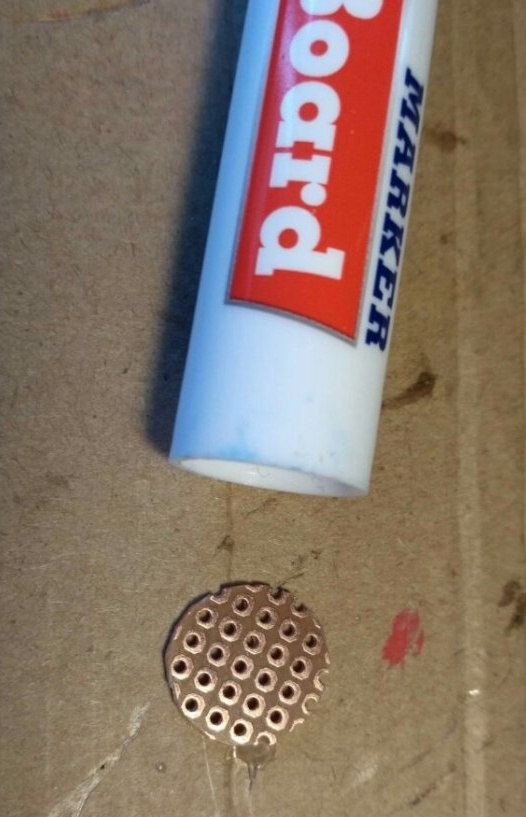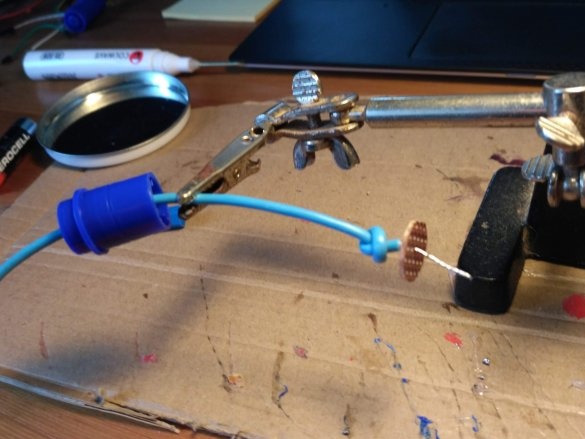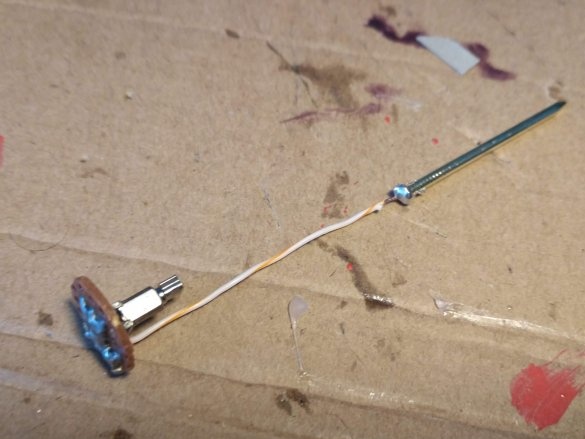The author of Hackaday under the nickname bitelxux ran into a problem: when working with a light probe, you have to look at the LED, but if the probe is sound, it can wake home when setting up the circuit at two in the morning. You can, of course, place the LED near one of the probes, then you won’t have to look at it, but the decision made by the master is even more interesting: to build in the probe a motor with an eccentric from a broken cell phone.
Cases for various probes and probes in the hands of masters often become dry felt-tip pens, and bitelxux decided to follow this tradition. As can be seen on the KDPV, two of them were required for this design. Well, the sketch shows what is inside each of them.
The inner diameter of the felt-tip pen allows you to place an AAA or even AA battery in it. The second fit here. The battery compartment contacts are mugs from a perfnoard breadboard with drops of solder; a crumpled piece of foil is located between the top contact and the positive terminal of the battery. It is better, of course, to solder the spring, but to the lower circle, where the battery has a minus, then the foil is not needed. The motor is placed in a cardboard tube and fixed so that the eccentric can rotate freely. Actually, the nails are the probes, the wires of which are soldered to the caps. The developer did not connect a diode in reverse polarity in parallel to the motor, but this must be done, without it, the components of the circuit under test can be damaged. If there is a diode, the polarity of the battery must be observed, otherwise it will be shorted when the probes are closed.
The master cuts out a neat circle from perfboard:
Solder to it a wire passed through the top cap of a felt-tip pen, pay attention to the use of a "third hand" - many masters are in no hurry to acquire this useful device, but in vain:
Then he cuts out the second same circle, places on it a motor with an eccentric and a contact pad with which one motor pin connects, and connects the second wire with a nail:
Do not forget about the advice given at the beginning of the article about the diode in reverse polarity.What to do with the second felt-tip pen is understandable: just disassemble it as the first one, make a hole in the cap, pass a wire through it connecting the probes to each other, and solder it to the same nail. Now it remains to fix both nails in their places with hot glue and assemble the probe as shown in the drawing.
Notes:
1. In order for the probe to turn out to be really quiet, everything capable of rattling should be fixed or damped in the first probe.
2. Use a probe to check only the resistance if there is no voltage in the circuit under test.
3. The probe should only be used to test circuits whose components cannot be disabled by a current of several tens of milliamps.





